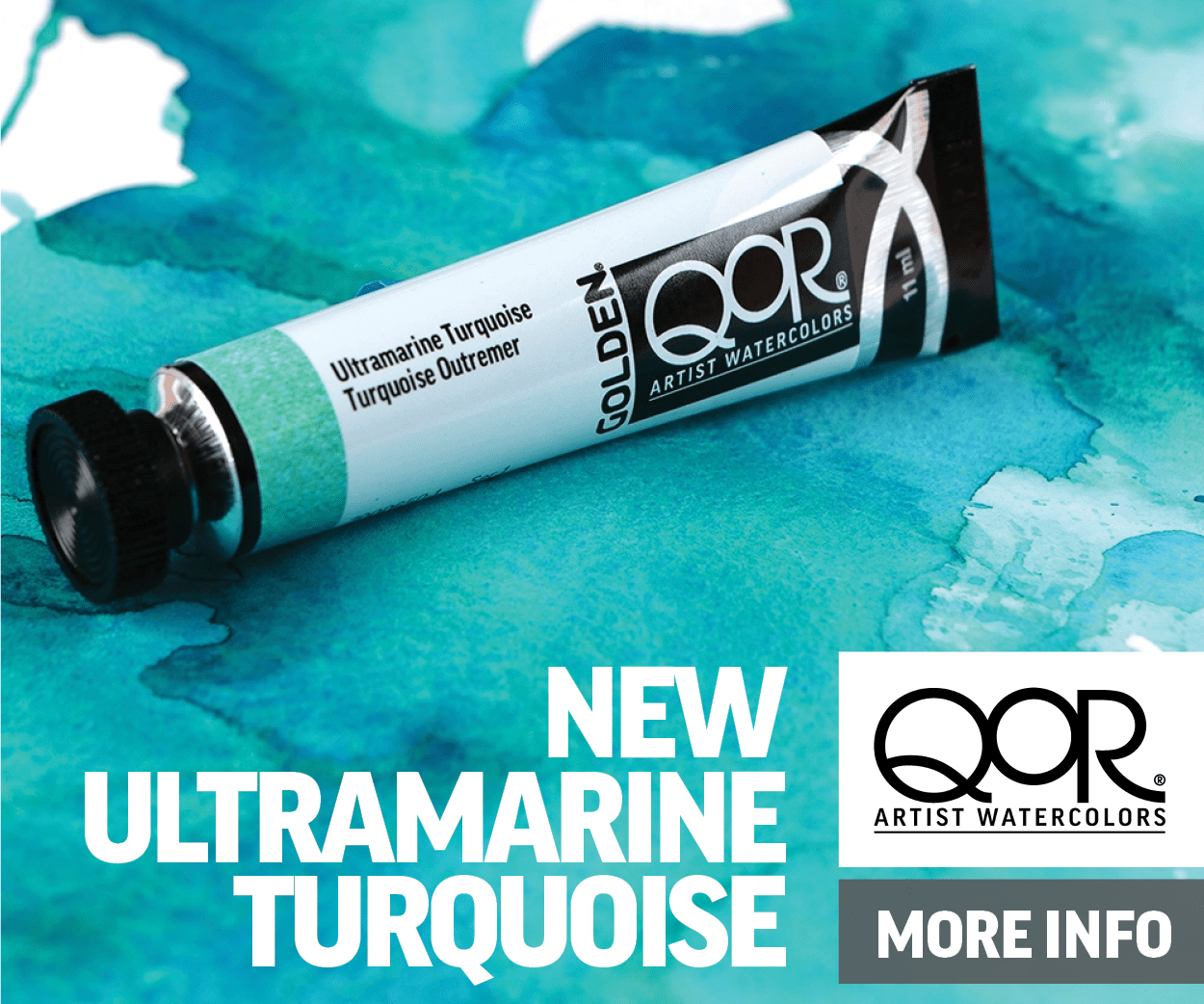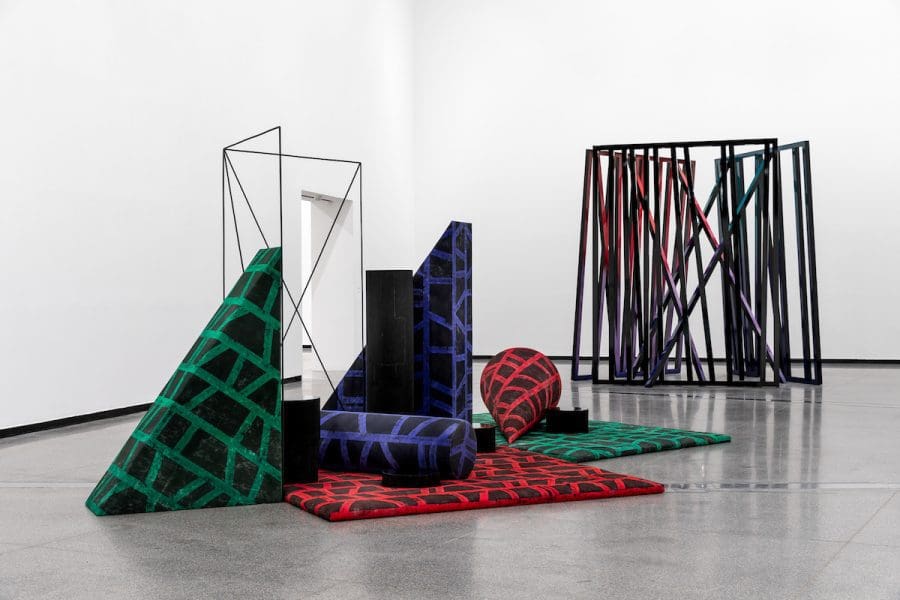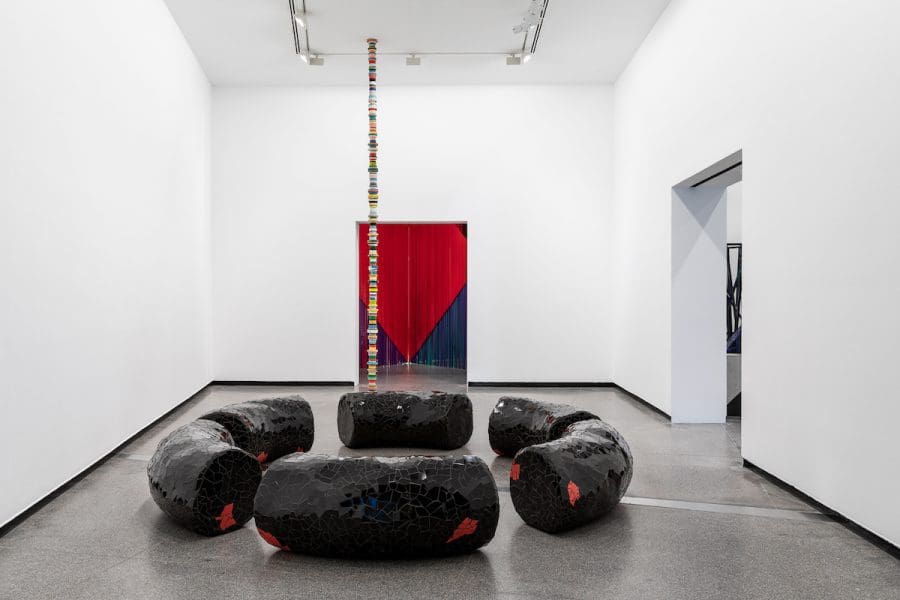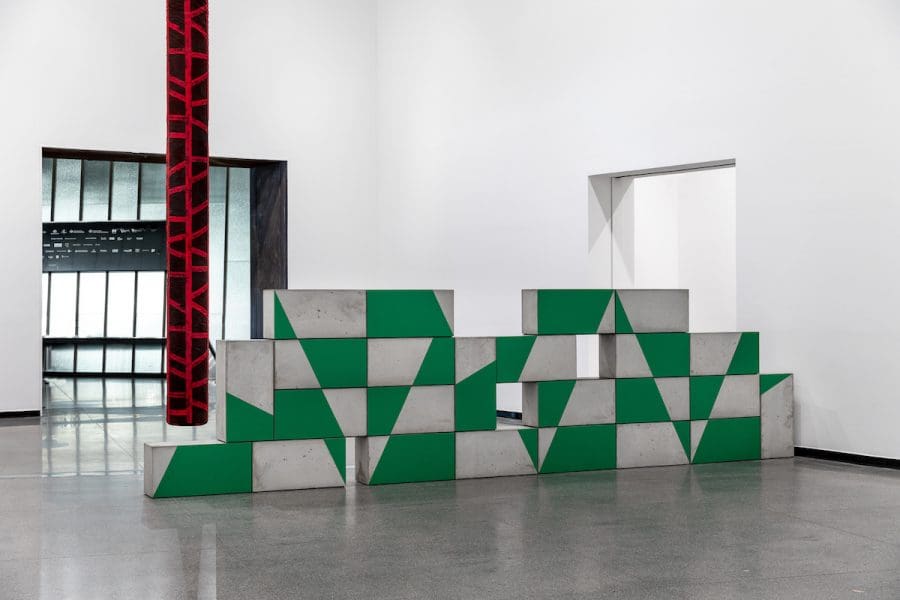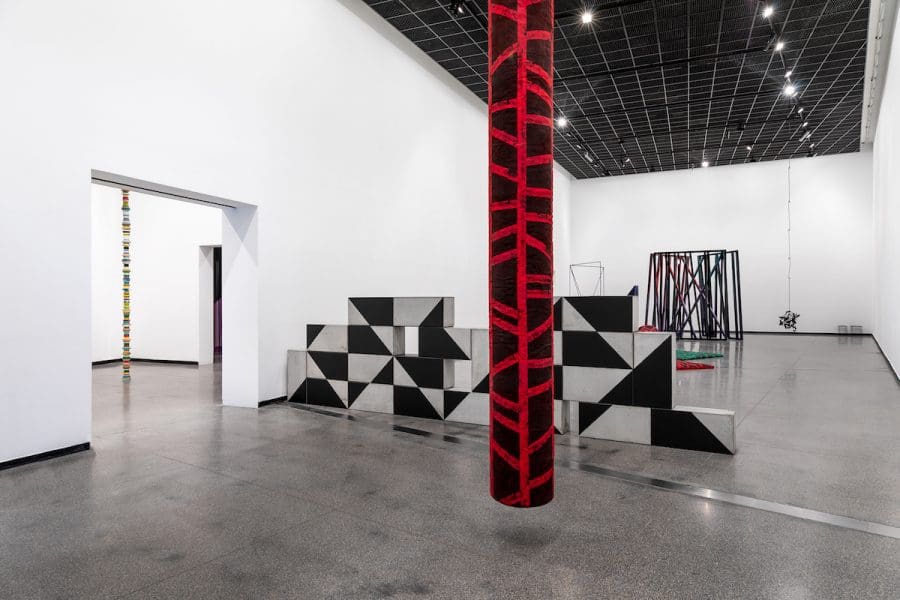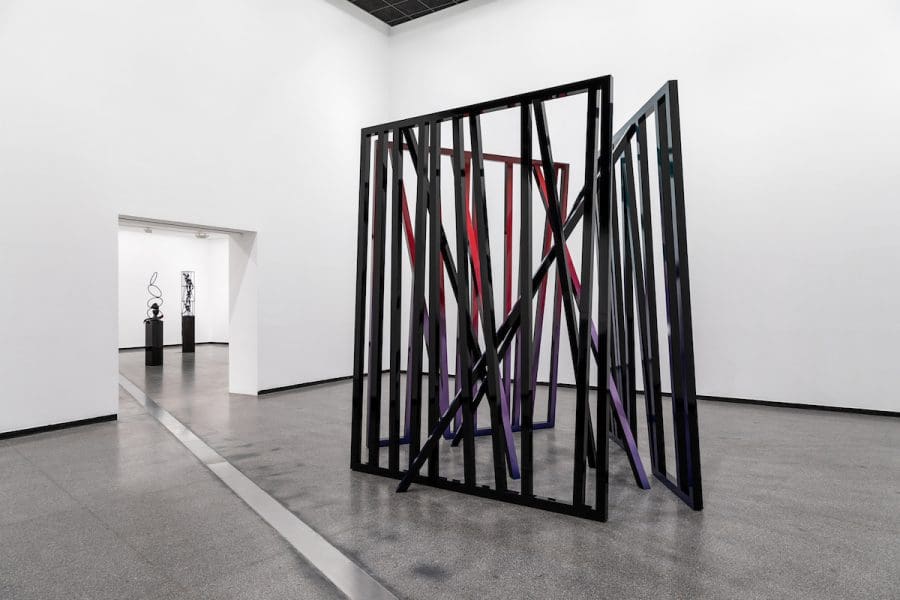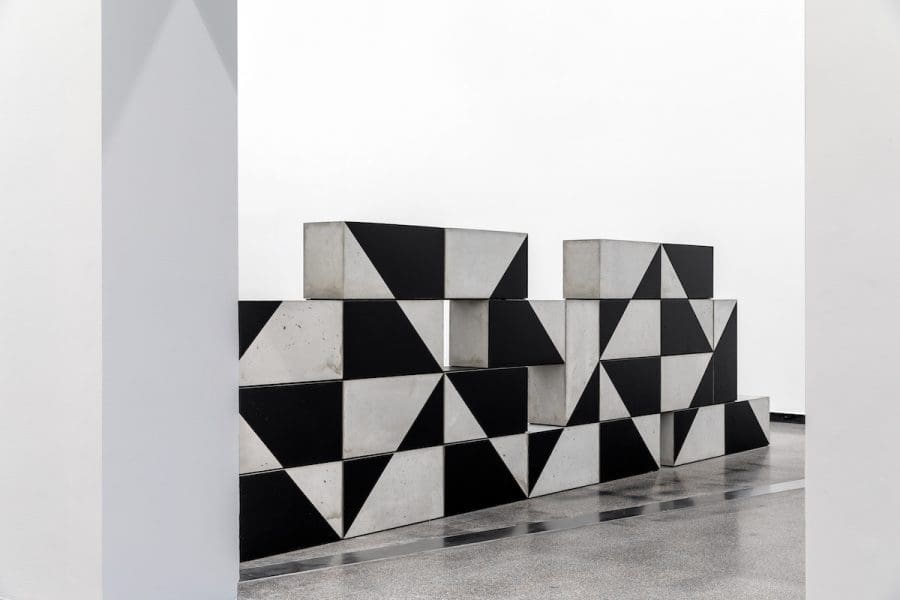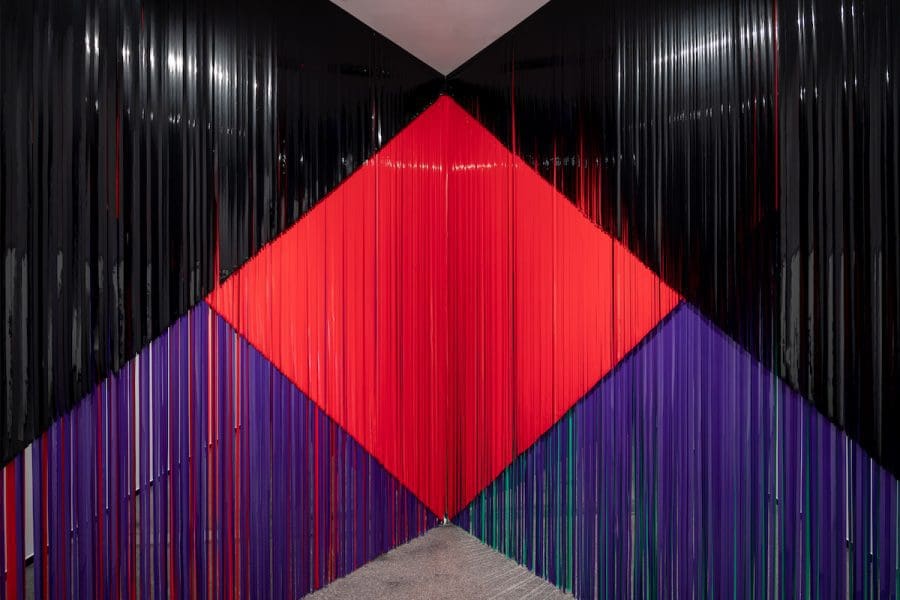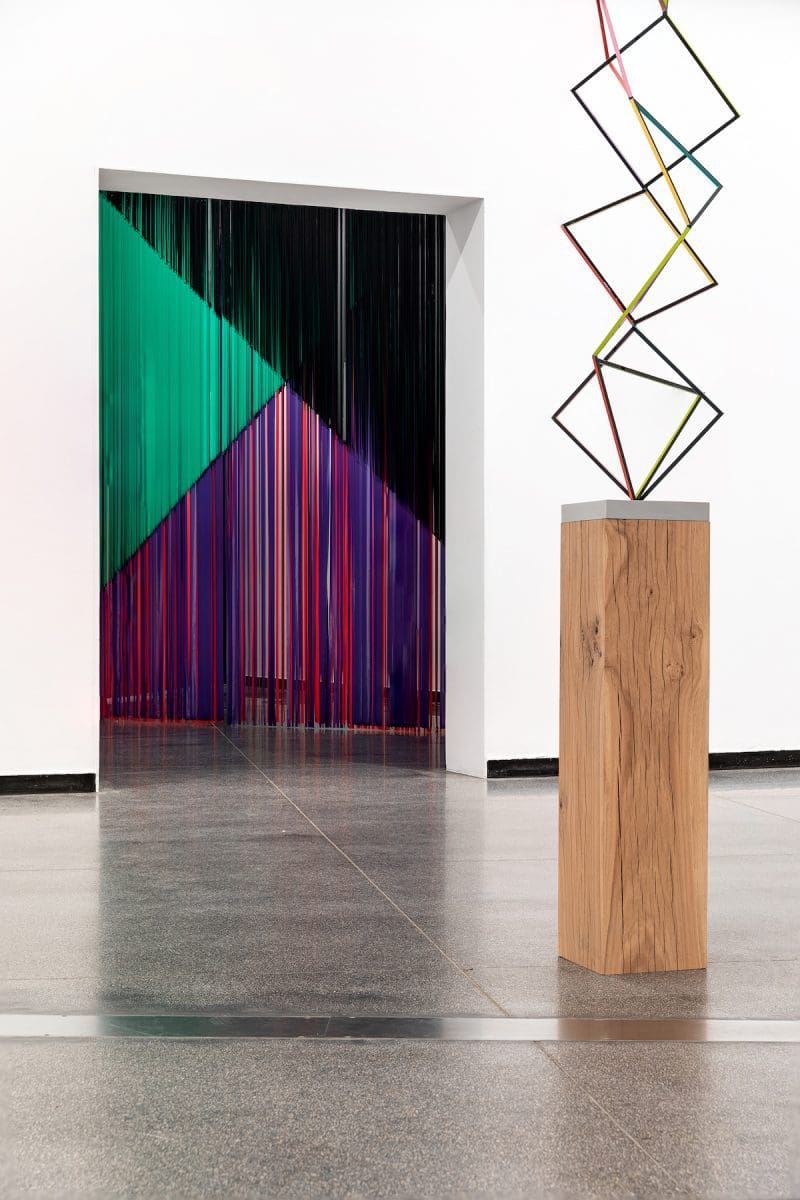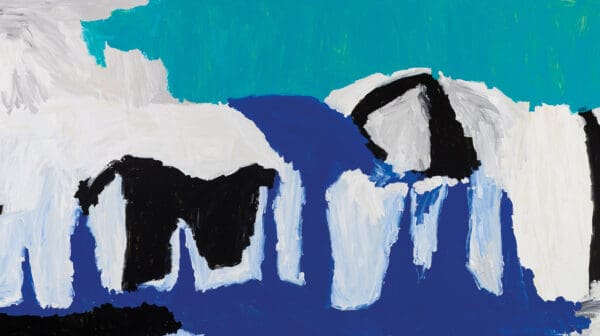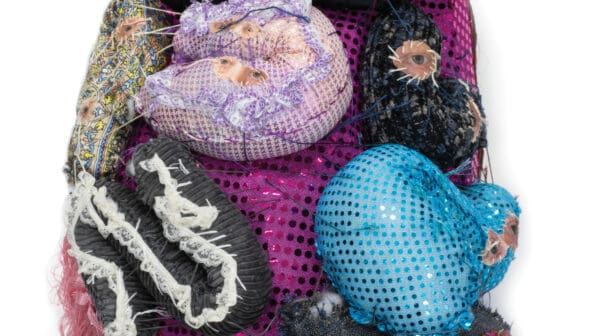A gigantic punching bag hangs from the ceiling and human-sized concrete blocks form a wall, obstructing your entrance. One of the first things you will notice when entering Eva Rothschild’s exhibition Kosmos at the Australian Centre for Contemporary Art (ACCA) is the monumental scale of the works. Stark, formalist forms in black metal and concrete dominate your view. But entering the space you encounter colours – red, blue and green – and a constructed landscape reveals itself, waiting for bodies to bring it to life.
It has been a while since ACCA has presented a purely sculptural exhibition, and the angular cavernous spaces prove the perfect setting for Rothschild’s formalist, abstract works. As Rothschild says, “Having the opportunity to work in such a big space, and also with the suite of episodic rooms, it’s really ideal.” Kosmos unfoldsacross four connecting exhibition spaces, taking visitors on a journey and showcasing the breadth of Rothschild’s practice in the past decade.
This show, part of the Melbourne International Arts Festival, is the first Australian survey for the Irish-born, London-based artist, who will be representing Ireland at the Venice Biennale next year. Rothschild has exhibited widely throughout Europe and North America since the late 1990s, building an international reputation for her distinct visual language that merges the legacy of modernist sculpture with classical architecture, spiritualism and pop-culture.
Rothschild’s work explores the social and spatial qualities of sculpture, and how architecture controls people’s movements. In particular, she points to the recent proliferation of defensive, or hazard architecture, which has appeared in response to threats of urban terrorism. “I’m interested in the ways in which humans interact with the physical world,” she explains.
Rothschild visited Melbourne last year in preparation for the exhibition, a trip that hugely influenced her work. During her visit she noticed the number of concrete bollards scattered around our city, and the public responses to these interventions through decorating or covering them. These temporary measures have become permanent interventions into our cityscape.
One of three new commissions for ACCA is Hazard, 2018, a large wall made up of concrete slabs and decorated in a monochrome geometric design. While it is a formalist piece, paying homage to minimalist artists, it is also impossible to view this work outside of our current political context in which walls, barriers and concrete bollards are loaded with meaning.
“I have an interest in the political in relation to my work,” Rothschild says. “Certainly there are things that wouldn’t have been in the work some years ago that relate to specific situations. The use of the concrete blocks feels like it comes from living in a certain environment and the way that spaces are corralled and contained.”
Rothschild describes herself as a material-based sculptor, but sees the materials she uses – including concrete, aluminium, Jesmonite, fibreglass and fabric – as a means to an end. Her practice is characterised by experimentation with form and process, which satisfies her fascination with the transformation of materials. In many of the works there is a tension between the handmade and the industrial, the touched and the untouched. In this conceptual playground materials are not always what they seem.
The human body is integral to Rothschild’s work, and as you move throughout the galleries, you are encouraged to notice your body in relation to the objects and the architecture. Rothschild has created an environment that she hopes visitors will spend time in, to sit, reflect, relax and play. When asked what she wanted visitors to know about her practice she responded, “I’m very happy for people to take the work as it is.”
Eva Rothschild: Kosmos
Australian Centre for Contemporary Art (ACCA)
28 September – 25 November


